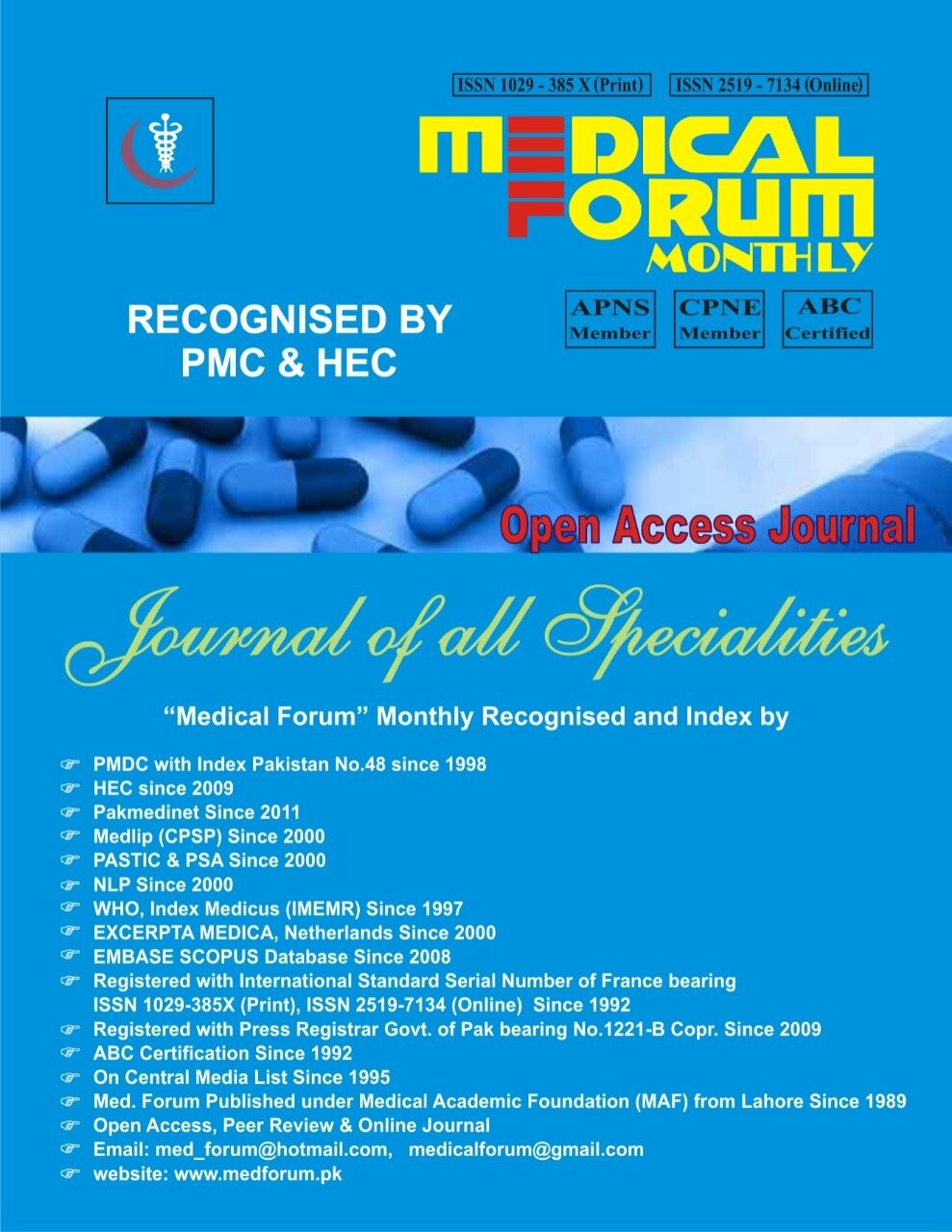
1.Association of Oral Hygiene Status and Dry Socket After Third Molar Surgery: A Prospective Cohort Study
Tariq Sardar1, Umer Ullah5, Umar Nasir2, Gulrukh Sheikh3, Bibi Maryam4 and
Zainab Shah6
ABSTRACT
Objective: This study evaluates the effect of oral hygiene status on frequency of dry socket after lower third molar surgery.
Study Design: Cohort study
Place and Duration of Study: This study was conducted at the Oral Surgery Department of Khyber College of Dentistry, from August 2017 to December 2020.
Materials and Methods: Total 270 patients were included in this study. Hygiene status of the oral cavity was evaluated using Oral Hygiene Index-Simplified (OHI-S). Data analysis was done using SPSS version 20. Simple and multiple logistic regression analyses were applied to measure the associations of independent variables and dry socket. A p-value of less than 0.05 was taken as significant.
Results: Total of 55 (20.4%) patients developed dry socket with 28 male patients and 29 belonging to age group 25 years or less. Association of dry socket with OHS (p=0.005) and duration of procedure (p=0.009) was statistically significant. Patients with poor OHS, fair OHS and duration of surgery more than 30 minutes were at higher odds of developing dry socket with adjusted odds ratio of 3.064 (95% C.I.:1.412, 6.647), 2.065 (95% C.I.:0.986, 4.329) and 2.097 (95% C.I.:1.133, 3.881) respectively. Association of age groups and gender with dry socket was statistically not significant.
Conclusion: Dry socket more commonly develops in patients with poor and fair oral hygiene after impacted MTM surgery, irrespective of gender and age.
Key Words: Impaction, Dry socket, Oral Hygiene Index-Simplified (OHI-S)
Citation of article: Sardar T, Umer Ullah, Nasir U, Sheikh G, Maryam B, Shah Z. Association of Oral Hygiene Status and Dry Socket After Third Molar Surgery: A Prospective Cohort Study. Med Forum 2022;33(5):2-6.
